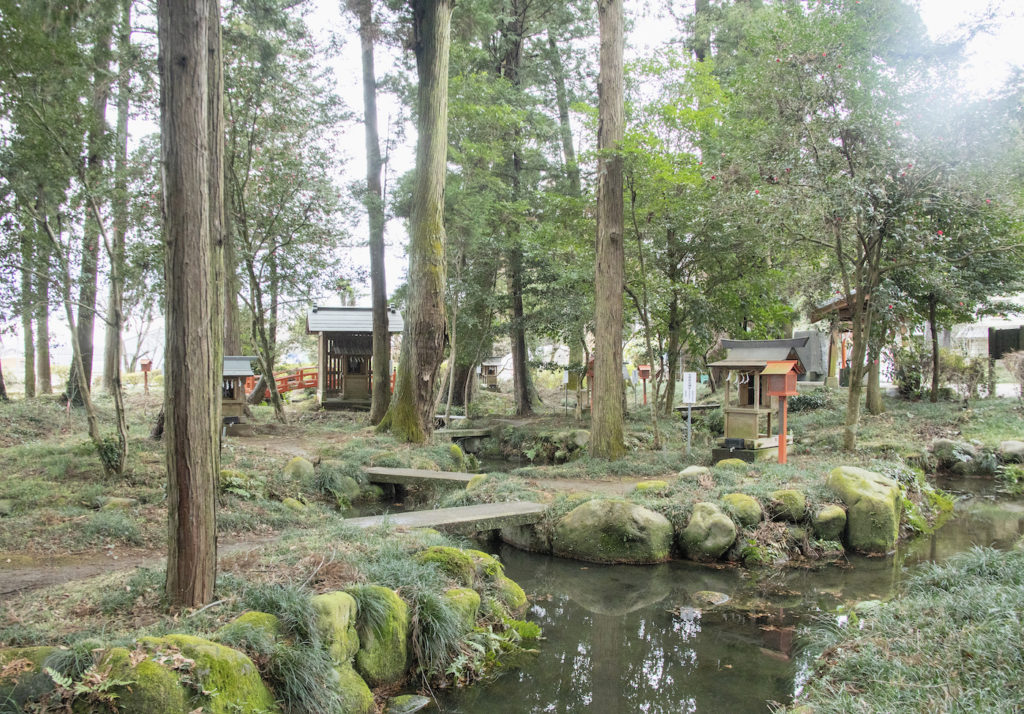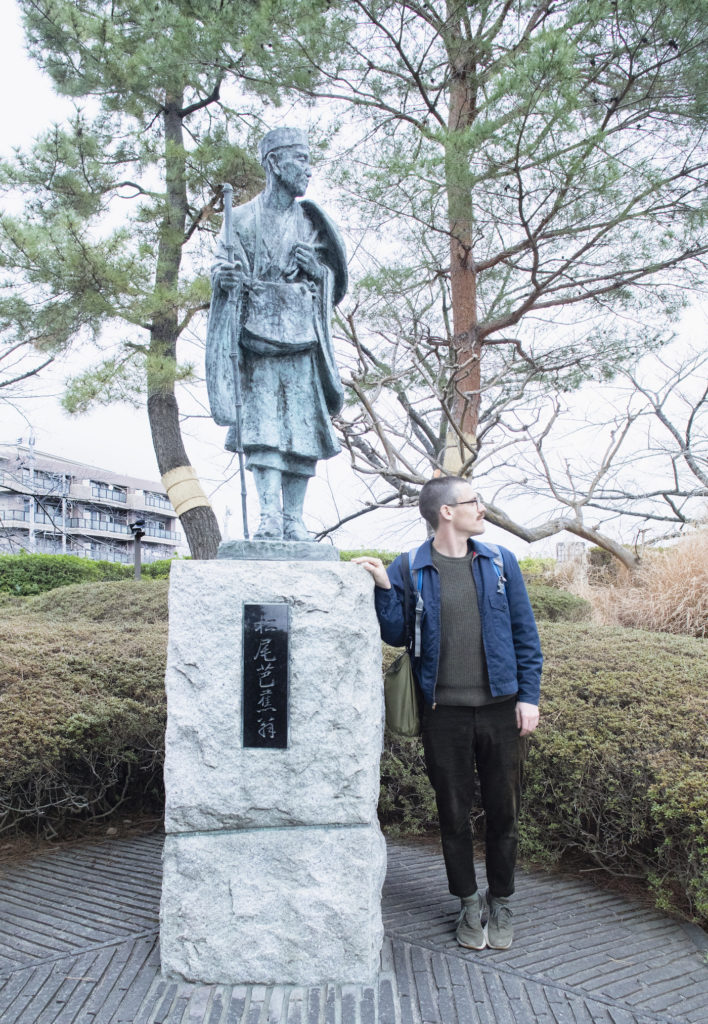
Age 48, poet by profession, 12,000 km journey on foot
Inspired to visit the places depicted in the works of the wandering poet Saigyo (1118–1190), Matsuo Basho embarked on a long journey to the northerly Oku (Tohoku region) in at the age of 48. Basho had left his home in Ueno, Iga Province (Mie Prefecture), for Edo (Tokyo) at age 29. He made a living as a teacher, editing and instructing in the collaborative poetry form haikai, and gained a decent foothold in the literary circles of Edo. After only seven years, however, he renounced that life and secluded himself in Fukagawa. Perhaps his closeness with a Zen priest in Kashima around this time evoked a longing for detachment. In 1689, he and his disciple Kawai Sora set out on the journey described in Oku no Hosomichi (The Narrow Road to Oku).
Papersky’s present-day version of Oku no Hosomichi starts at the Koto Basho Memorial Hall, which displays relics of Basho’s time in Fukagawa. Whereas Basho took a boat from Fukagawa to Senju, we today make our way to Senju on foot. Our guest on this trip is New Zealand architect Stuart Taylor. We follow the Sumidagawa River north through Asakusa to Minami Senju, making a detour to Leaves, a charming coffee stand and listing old buildings that catch Stuart’s eye on the way, fully reaping the rewards of traveling on foot.
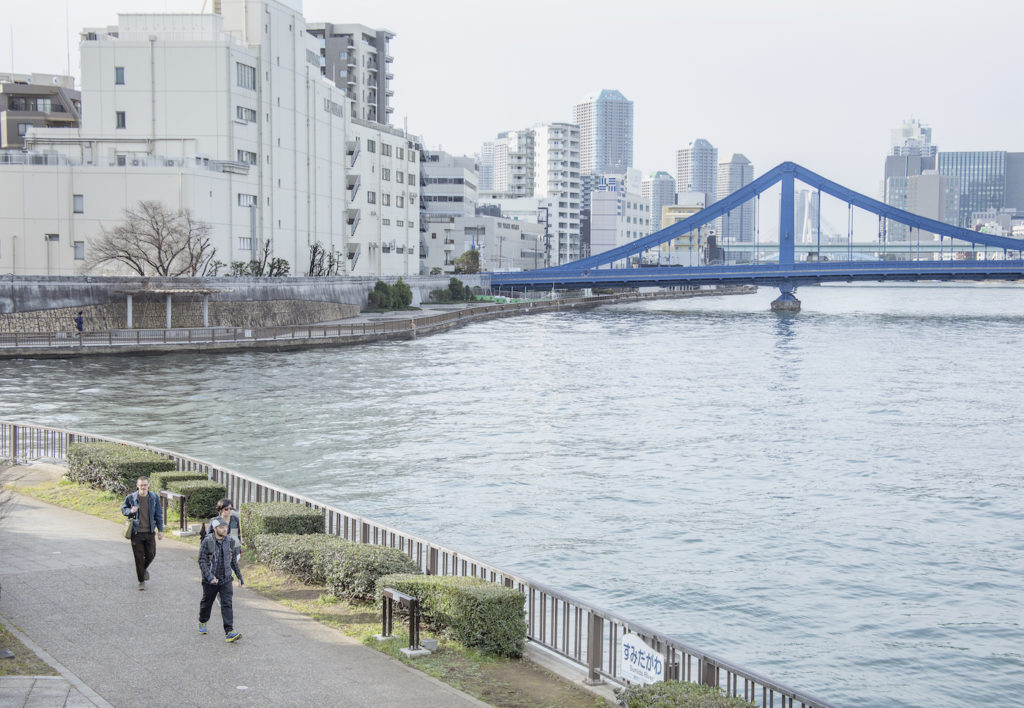
The first stopover is the first post station on the Nikko Kaido—Senju-shuku. Having left Fukagawa early in the morning, Basho landed on the north side of today’s Senju-ohashi Bridge. He composed this haiku to mark the start of his new trip:
Spring is passing by!
Birds are weeping and the eyes
Of fish fill with tears
Though Basho was a seasoned traveler, even he must have been anxious about traveling 3,000 ri (12,000 km) on his first visit to the Tohoku region, and without complete confidence in his health.
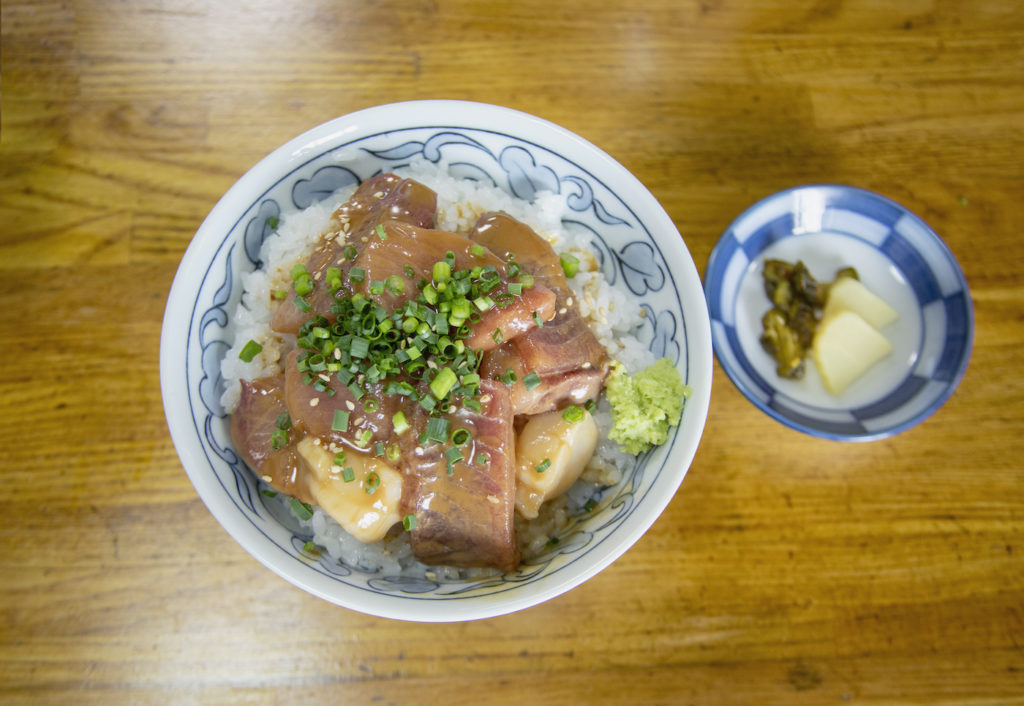
Beyond the “yacchaba” market that served as the kitchen of Edo is the second post station, Soka-shuku. This is actually the first station mentioned in Oku no Hosomichi. Let’s ask the Soka-shuku guide Giichi Taguchi to give us a tour.
“At the time the Nikko Kaido was built, the post station after Senju-shuku was Koshigaya-juku. But because they were separated by a distance of over 4 ri (16 km), the marshland halfway between was converted into a new station. That was Soka-shuku. After being officially recognized by the Tokugawa shogunate in 1630, it flourished into a post town with over sixty inns at its peak.”
Where the Nikko Kaido meets the Ayasegawa River, the townscape switches to picturesque rows of pine trees. This is Soka Matsubara, designated as a national place of scenic beauty associated with Oku no Hosomichi. The promenade along the Ayasegawa River lined with 634 pine trees is said to preserve the atmosphere of the past. But our guide, Mr. Taguchi, who has studied historical documents on Soka-shuku, calculates that the pine trees were planted later in the Edo period, around 1790. Basho would have strolled through quite a different scene, in other words, but the pine-lined promenade has long entertained travelers just the same.
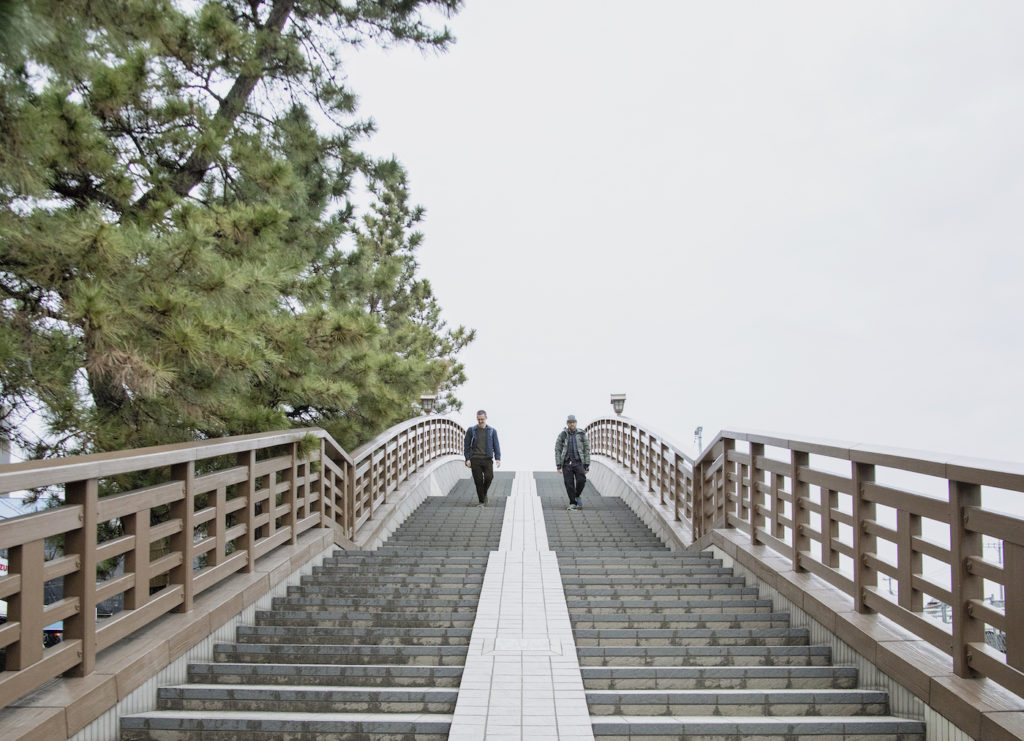
Day two starts at the fourth post station, Kasukabe-juku. Although this place is omitted from Oku no Hosomichi, Basho and his travel companion, Sora, spent their first night here, and not at Soka-shuku, according to Sora’s Diary. In the drizzling rain, we pass through the old checkpoint of Kurihashi Sekisho and cross the Tonegawa River to Koga City, in Ibaraki Prefecture. Apparently, Basho hurried past this ninth post station. “Koga-shuku was a post station of the Nikko Kaido, but it had a stronger character as a castle town,” says the Koga City volunteer tourist guide Kazuaki Soeda. Koga was the home of the Koga Castle, built between the late Heian period (794–1185) and the early Kamakura period (1185–1333), and it flourished into the Edo period (1603–1868).
“Nikko Toshogu Shrine was sacred to the Tokugawa shogunate, and as many as 19 pilgrimages were made by the reigning shogun. One of the castles that served the shogun’s entourage on these pilgrimages was Koga Castle. As a castle town and a post station, Koga thrived on water transport by the Watarasegawa River. Doi Toshikatsu, the lord of Koga Castle, served as the first Tairo of the Tokugawa shogunate—a high-ranking position comparable to prime minister. He was rumored to be the illegitimate child of the first shogun, Tokugawa Ieyasu.”
That Basho passed through such a thriving town suggests that Koga at the time had no patrons to support poets.
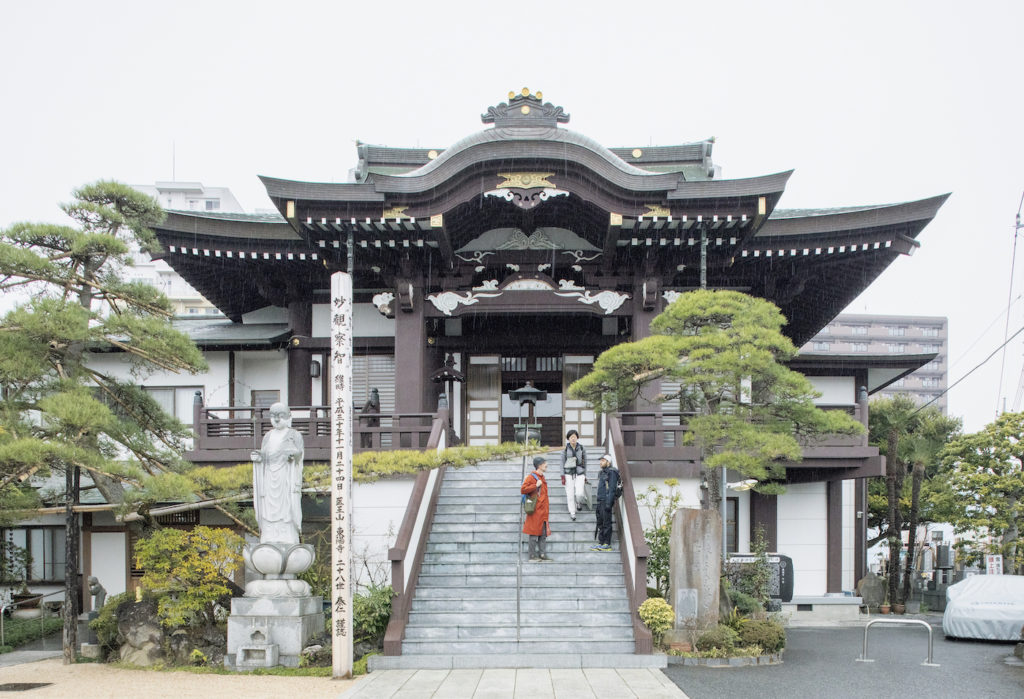
Was “smoke” rising from Muro no Yashima?
On day three, we depart Koga and head for our goal at Muro no Yashima. Along the way is Oyama City, in Tochigi Prefecture, known as the scene of Ieyasu’s war council that was instrumental to his victory in the Battle of Sekigahara, and thus to his founding of the Tokugawa shogunate. Pass this Oyama, and Omiwa Shrine, aka Muro no Yashima, is right around the corner. We walk through the avenue of cedar trees donated by Ieyasu, and the shrine’s red torii gate comes into view. It is famous for the poetic image of “smoke” rising from a small lake. As assistant, Sora must have selected this spot depicted in poems specially for Basho. According to Sora’s Diary, Basho indeed composed two poems here, although neither made it into Oku no Hosomichi in the end. Perhaps the place didn’t offer the image of “smoke” that Basho had in mind.Basho went on to Nikko, but our trip this time ends here. What haiku poems were we at Papersky inspired to write? That remains our secret.
